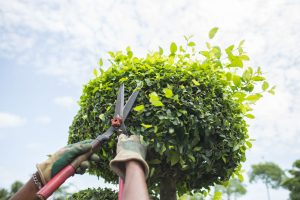To Grow More, You Should Cut Back
Heading Cuts
 Young shrubs should be pruned lightly to make them grow fuller and bushier. With hand pruners, trim long, unbranched stems by cutting just above a healthy bud. This type of pruning, called heading, encourages lower side branches to develop and enhances the shrub’s natural form. When selecting a bud tip to trim to, keep in mind that the new branch will grow out in the direction of the bud. Like most pruning, heading cuts should be timed to avoid disrupting the plant’s flowering.
Young shrubs should be pruned lightly to make them grow fuller and bushier. With hand pruners, trim long, unbranched stems by cutting just above a healthy bud. This type of pruning, called heading, encourages lower side branches to develop and enhances the shrub’s natural form. When selecting a bud tip to trim to, keep in mind that the new branch will grow out in the direction of the bud. Like most pruning, heading cuts should be timed to avoid disrupting the plant’s flowering.
As a shrub develops, thin out old, weak, rubbing, or wayward branches where they merge with another branch. This opens up the middle of the plant to more sunlight, which keeps interior branches healthy, stimulates growth, and increases flowering.
Older and Neglected Shrubs
Older shrubs that have become a tangle of unproductive stems may require a more extensive program of thinning cuts, called renewal or renovation pruning, that takes at least three years. On shrubs with multiple stems that grow up from the base, like lilac, viburnum, forsythia, and dogwood, gradually remove all of the old stems while leaving the new, flower-producing growth untouched. Eventually, the new flower-producing stems will completely replace the lackluster old growth.
Neglected shrubs may call for a more drastic approach: hard pruning. Most deciduous shrubs that respond well to renewal pruning can also take hard pruning, as will a handful of broadleaf evergreens, such as privet. Using loppers and a pruning saw, cut back all stems to within an inch of the ground during the plant’s winter dormancy. (For more on the correct tools to use, see Choosing and Using Pruners and Loppers) Come spring, the plants will quickly produce new shoots from the base. Of course, this technique will leave you with little to look at while waiting for the new growth.
Our lawn care prices in Coppell, TX are very affordable but for exact pricing on your lawn please give us a call for a free quote.
